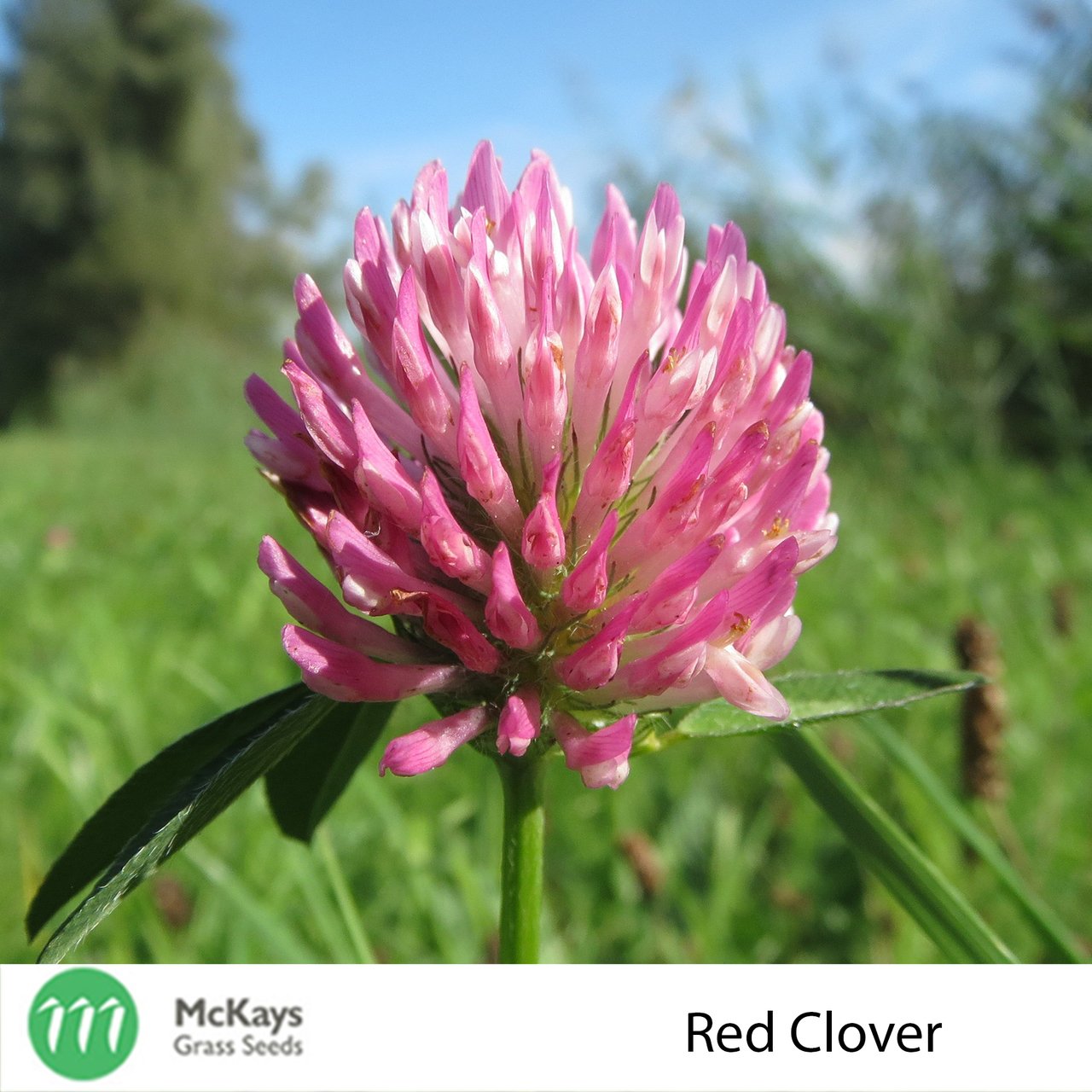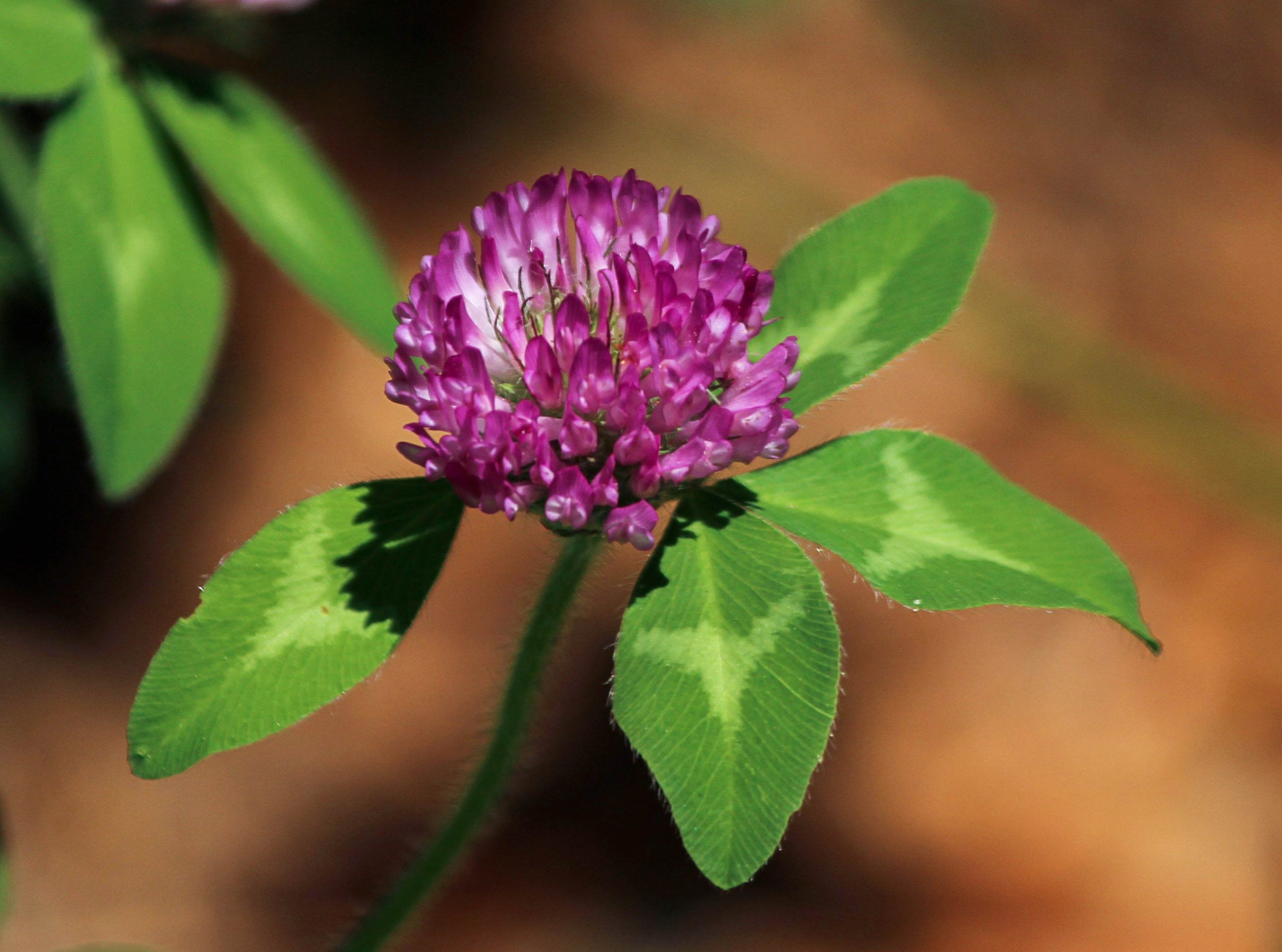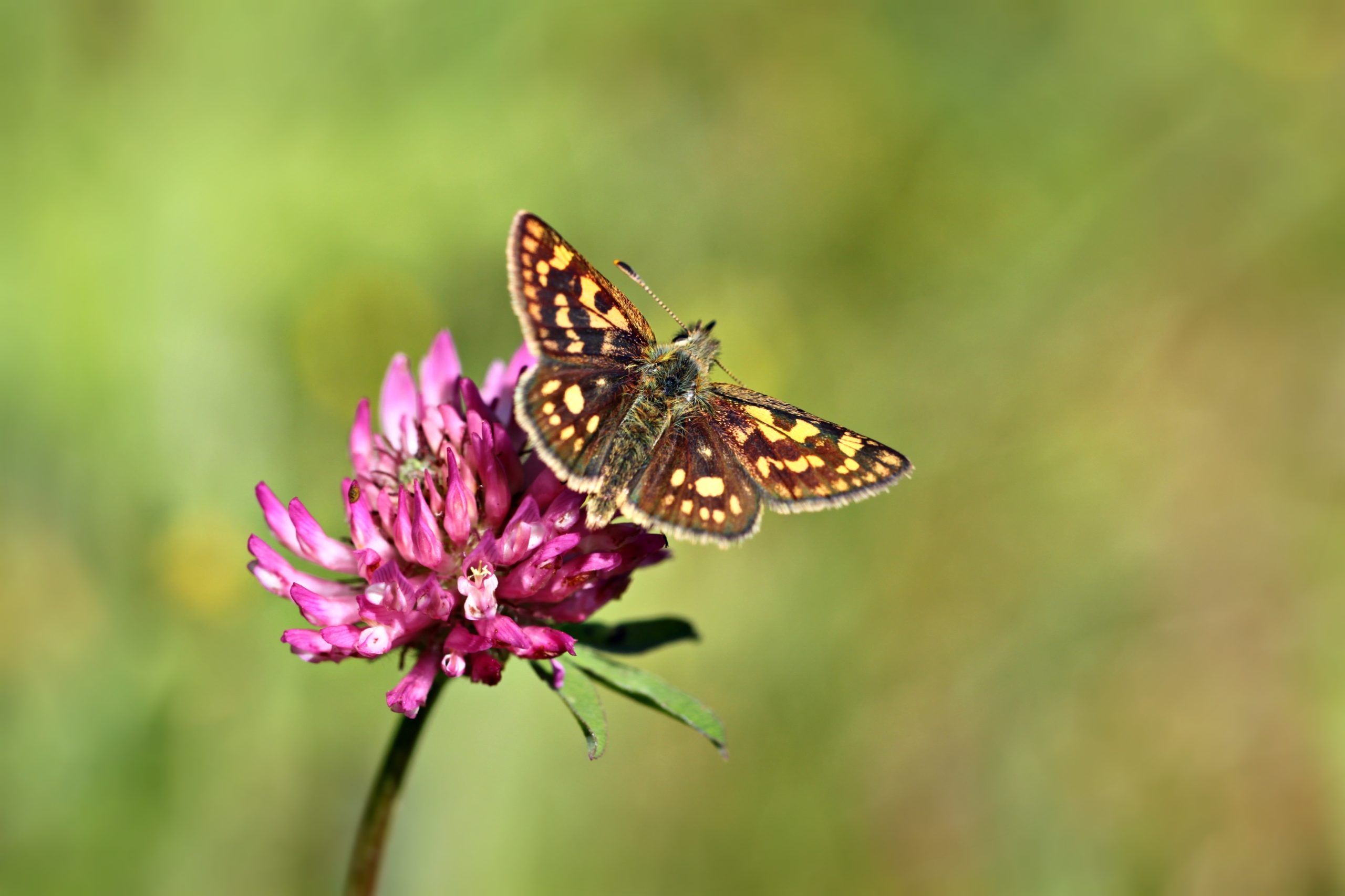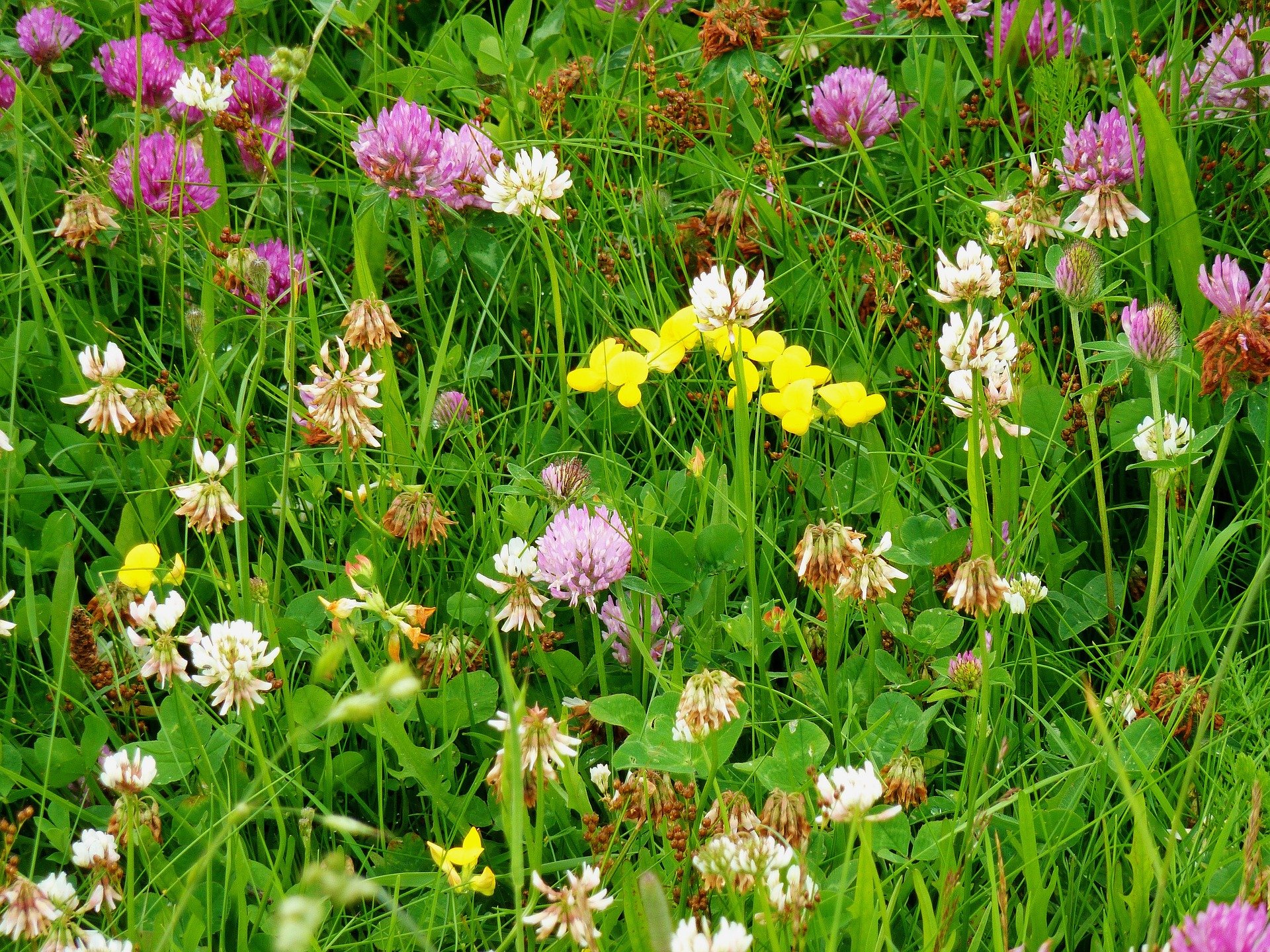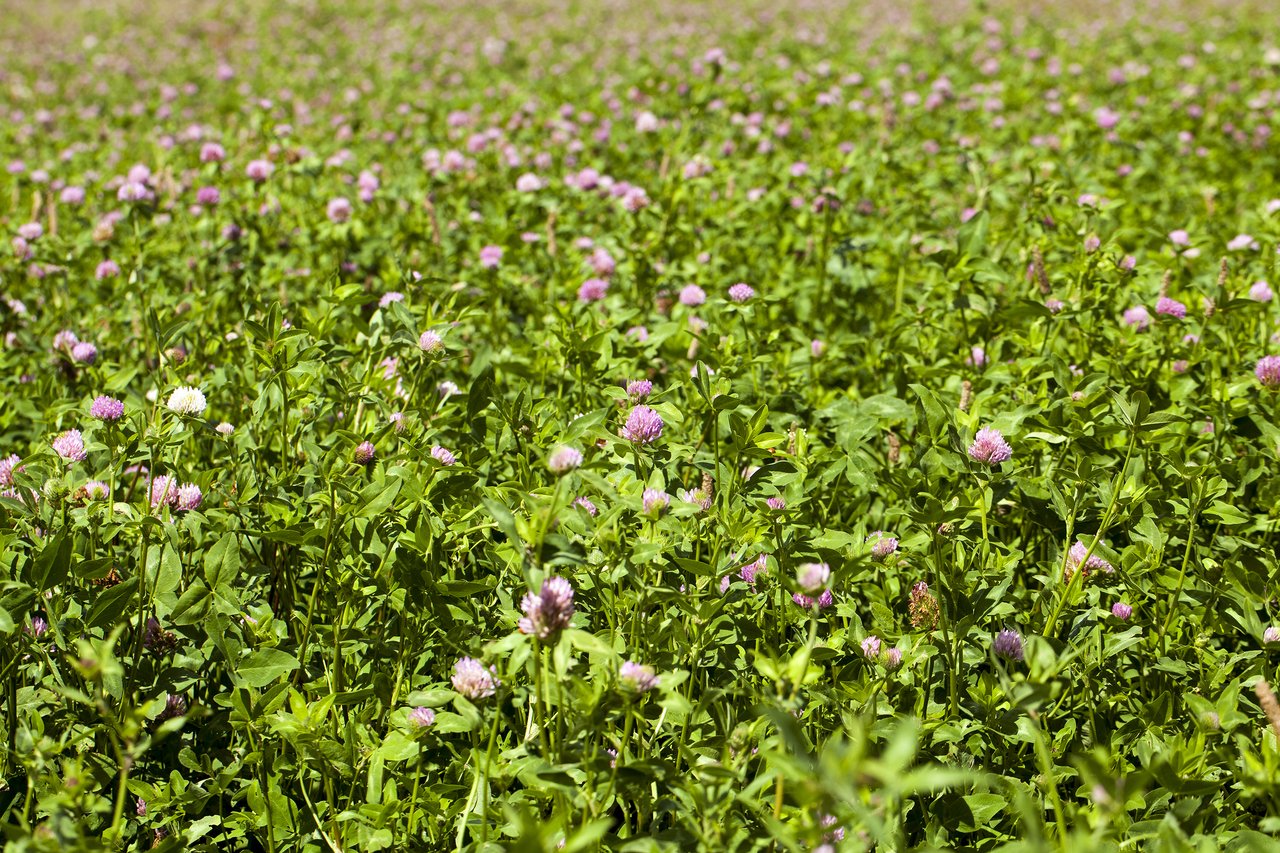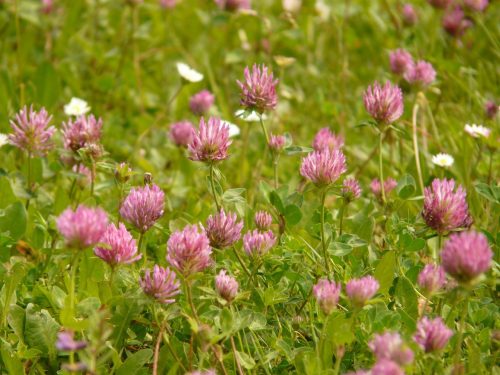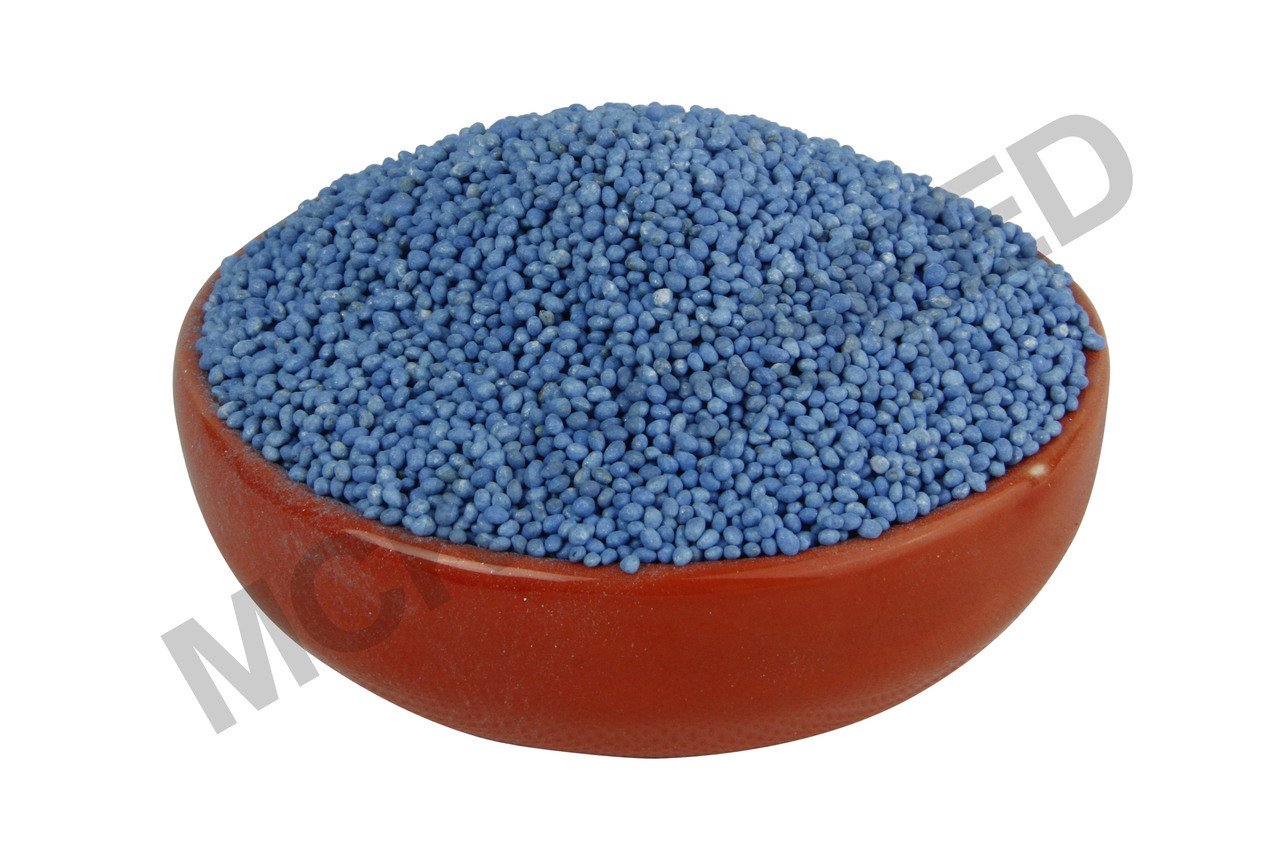Red Clover
Red Clover (Trifolium Pratense) establishes vigorously and is commonly grown as a green manure or fodder crop, valued for its Nitrogen fixation, which increases soil fertility by fixating Nitrogen out of the atmosphere and into the soil. For this reason, Red Clover is often used as part of a crop rotation program.
The green leaves have three leaflets, with a characteristic pale crescent in the outer half of the leaf. The flowers are large sphere-shaped, clustered and rose-colored. The flowers and leaves of Red Clover are edible and can be added as garnishes to any dish. Due to its beauty, it is also used as an ornamental plant.
Red Clover adapts to a wide range of climatic conditions, soil types, fertility levels, use patterns and management. It prefers mild conditions rather than hot climates and locations where rainfall or irrigation is consistent throughout the year.
Red Clover is a most productive, summer-active forage legume for Temperate areas. It can be used for pasture, cattle grazing, hay, or silage and is an excellent soil improvement crop. Can be grown in a short-term pasture mix.
Seeding rates:
- Lawns: 10 grams per square meter (1kg/100m2).
- Pasture: 1 kg per square acre.
Please note: This seed may be coated in Prillcoat seed treatment. Batches may vary.
For more information see below for Description and Features to see if this grass suits you!
Description
Red Clover otherwise known as Trifolium Pratense, derives its name from the Latin tres, “three”, and folium, “leaf”, so called from the characteristic form of the leaf, which usually but not always has three leaflets. It is native to Europe, Western Asia, and northwest Africa.
It is a short-term (2–3 years) perennial legume. Most growth occurs in Summer and Autumn. Best suited to well-drained, fertile, slightly acid to neutral soils. Suited to high rainfall with a good proportion of it during summer. Red clover is relatively easy to remain free of disease and pests.
See our guide: Everything you need to know about Red Clover
Optimal pH: Clovers are known to tolerate acidic soils, however it performs best in a pH range of 5.5–7.0.
Sowing Tips: Ideally, sow seed into soft top soil or sandy loam. Broadcast the seed at, or very near, the soil surface and incorporate lightly with raking. To ensure best coverage and avoid seed wastage we recommend using an appropriate seed spreader for the size of your area. Soil must remain damp throughout the germination period of both seeds and must be maintained for at least 1-2 weeks after sowing, through irrigation or natural rainfall. Performs best on well-drained fertile loamy soils of moderate to heavy texture. Moderate tolerance to soil aluminium. Does not thrive on poorly drained soils. Low tolerance to saline soils.
Optimal Planting Time: Autumn to Spring, if irrigated.
Germination: 7-14 days, climate and condition dependent.
Water: Red Clover needs moisture. It doesn’t tolerate drought conditions very well and needs summer rain or irrigation to thrive. It has the ability to tolerate some waterlogging.
Fertilising: Whilst it will grow more successfully in infertile conditions than other plants, it will not grow without a decent level of phosphorus in the soil. Luckily, this can be solved with by using McKays Slow Release Fertiliser.
First Mowing: Once roots are established enough to withstand the mowing process.
Mowing Frequency: Red Clover can tolerate close mowing and grazing.
Disadvantages of Red Clover:
- It doesn’t cope well with heat, and ideally needs consistent rainfall or irrigation throughout the year. Red Clover will struggle in the sub-tropical and tropical areas or Western Australia, Queensland and the Northern Territory.
- While a relatively unfussy plant when it comes to soil quality, Red Clover has been known to struggle with alkaline soils. If your soil has a pH of 7+, you may need to prepare it with a soil mixture prior to sowing.
- If planted as a stand-alone crop, Red Clover has been known to occasionally bloat animals. This being the case, Red Clover may be companion planted with a Perennial Ryegrass. Bloating most often occurs when the clover is used as hay.
- Susceptible to root rot.
Seed & package details: 100% Red Clover.
Independently Tested: A seed testing certificate is available on request.
Ideal Usage: Pasture Crop, Nitrogen Fixation, Bee Attracting.
NOTE: Pasture Seed and Animal Health
When purchasing seeds through McKays Grass Seeds, the buyer acknowledges that McKays Grass Seeds is not liable for any animal health issues that may arise from our pasture seeds.
It is the buyers responsibility to contact a certified agronomist to ensure they are purchasing the correct seeds, in the correct quantities for their property, location and animals.
Where can I sow this grass in Australia? Areas 4, 5, 6, 7, 8, 9
Shade tolerance: Good
Daily Sunlight required: 4+ hours
Drought tolerance: Good
Frost Resistance: Excellent
Traffic Tolerance: Fine
Locations

Season
Warm season grasses thrive during the warmer months in Spring and Summer and may go dormant in cooler climates through winter.
Cool season grasses thrive during the cooler months in Winter
Seed information
Shade tolerance (Weather)
- Full Sun
- Part Shade
- Heavy Shade
- Full Shade
Drought tolerance (Weather)
- Moderate
- Good
- Excellent
Traffic tolerance (Weather)
- Moderate
- Good
- Excellent
Frost tolerance
- Poor
- Moderate
- Good
- Excellent
Average days to germination
- 2-3 Weeks
- 2-4 Weeks
- 3-4 Weeks
Free Metro Shipping On All Orders Over $75
We provide free standard delivery shipping for all orders to "metro" zones, where the total cart value exceeds $75.00.
Otherwise, to metro zones it's a flat rate of $9 (for orders under $75).
Non-Metro Zones
Standard Delivery
Australia Wide (except Western Australia), at cost from Australia Post.
Orders are dispatched within 24 hours via regular Australia Post (3-5 business days).
Express Post
In a hurry? Express shipping is available at checkout for both Metro and Non-Metro Zones. Priced according to shipment weight.
WA Customers
Due to quarantine restrictions, we have a different product range available for Western Australia.
If you are shopping for delivery to WA, please view our WA site here
Pick-up Not Available
Sorry, we are not able to offer local pick-up.
International
Unfortunately we are not able to ship internationally.


